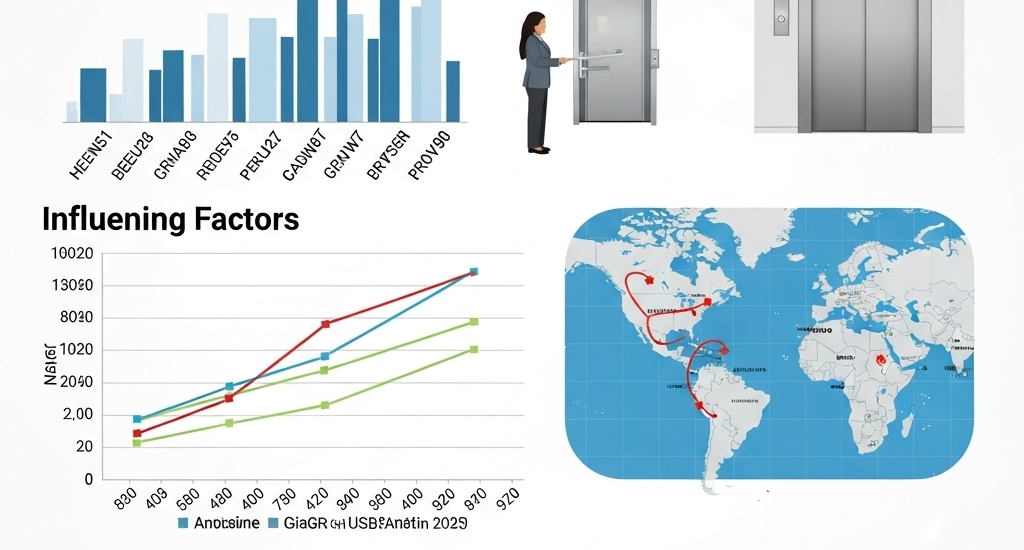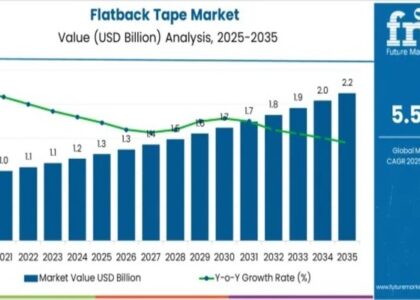The elevator once a symbol of opulence is now a symbol of necessity. As the world ages and homes rise vertically instead of sprawling horizontally, the home elevator is stepping out of the luxury shadows and into the mainstream.
The home elevator market is expected to experience substantial growth between 2025 and 2035, driven by rising urbanization, increasing demand for mobility solutions among the elderly, and advancements in home automation technologies.
The market was valued at USD 11,930 million in 2025 and is projected to reach USD 25,660 million by 2035, reflecting a compound annual growth rate (CAGR) of 7.8% over the forecast period.
Request a Sample of this Report:
https://www.futuremarketinsights.com/reports/sample/rep-gb-17352
Stairs Are the New Barrier
The truth is blunt: stairs are becoming the enemy of independence. As life expectancy rises and joint replacements become common among retirees, the design of our homes hasn’t kept up. Walk into any two-story house built before 2000 and you’ll find a potential injury waiting to happen.
Families are noticing. And they’re acting.
Home elevators are no longer just about convenience. They’re about staying put, staying safe, and maintaining control over where and how we live. “Aging in place” is no longer a buzzword—it’s a personal mission for millions. And elevators are quietly becoming the centerpiece of that mission.
Homes That Grow With You
Future-ready homeowners aren’t just installing elevators—they’re designing for them from day one. Builders are leaving vertical voids and pre-engineering shafts in new constructions, knowing full well that within a decade, those empty spaces will likely be filled.
Why? Because life changes—and fast. One fall, one diagnosis, or one parent moving in can turn a staircase from an afterthought into an architectural flaw. A home that can adapt is a home that holds its value—and its people.
Browse Full Report Here: https://www.futuremarketinsights.com/reports/home-elevator-market
Design, Innovation, and the Death of the “Clunky Lift”
Forget what you think you know about home elevators. Today’s systems are not clunky steel boxes. They’re quiet, compact, and borderline stylish. Some models even run on air pressure. Yes, air.
According to FMI, traction and hydraulic systems still dominate, but pneumatic systems are gaining ground—especially in tight urban homes. These innovations aren’t just aesthetic. They’re economic. Smaller footprints mean easier installation. Lower energy consumption means smaller bills.
And smart technology? It’s everywhere. Home elevators now come with voice activation, app controls, and built-in diagnostics. They’re not only safer—they’re smarter than many people realize.
Accessibility Is Still a Privilege
Let’s be honest: this isn’t yet a universally accessible solution. A two-stop home elevator can cost tens of thousands. That’s out of reach for far too many households. And until policymakers treat home mobility infrastructure as seriously as, say, solar panels or EV chargers, the divide will grow.
The result? The people who need elevators the most are often the ones least able to afford them. That’s not just unfortunate. That’s unacceptable.
Latest Material Handling Equipment Reports: https://www.futuremarketinsights.com/industry-analysis/material-handling-equipment
The Revolution Inside Our Walls
This trend isn’t loud. It doesn’t grab headlines like AI or space tourism. But it’s happening. Quietly. Persistently. In brownstones, in split-levels, in suburban homes across the globe.
This is a design revolution built not on flash—but on function. It’s about enabling people to live with dignity, even when their bodies begin to falter. It’s about giving families peace of mind. And yes, it’s about preparing our homes for the inevitable—because aging is not a niche market. It’s the future.
The home elevator is no longer an extravagance. It’s a lifeline. And as the data shows, it’s not slowing down anytime soon.
Top Investment Segments in the Home Elevator Market
By Type:
- Hydraulic Elevator
- Machine Room Less Elevator
- Machine Room Elevator
- Others
By Application:
- Passengers
- Freight
By Region:
- North America
- Latin America
- Western Europe
- Eastern Europe
- East Asia
- South Asia Pacific
- Middle East and Africa





